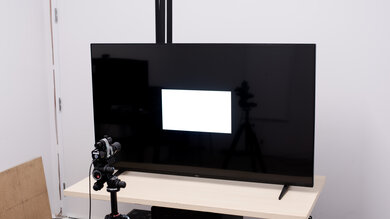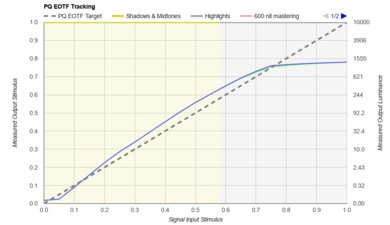- Table of Contents
- Intro
- Best TV
- Best Mid-Range
- Best Cheap
- Notable Mentions
- Recent Updates
- All Reviews
- Comments

Roku is well-known in the world of streaming devices, but they're typically known for their external dedicated smart TV boxes and streaming sticks. In 2014, TCL and Hisense launched new lines of TVs with the Roku Smart TV interface integrated into their TVs, offering the same great streaming interface and channel selection without needing an external device. Hisense is sparingly releasing new TVs with the Roku Smart Interface now, and TCL released much fewer in 2023, but some of their 2022 models can still be purchased. Thankfully, Roku released their own line of TVs in 2023, and they are widely available at Best Buy. Not all Roku TVs are the same, so choosing one depends on the TV's performance and your needs. Of course, you can buy a Roku box and connect it to any TV, but these recommendations focus on TVs that are powered by Roku's operating system.
We've bought and tested more than 445 TVs, and below are our recommendations for the best Roku TVs you can buy. See our picks for the best budget TVs, the best smart TVs, and the best small TVs. You can also vote on which ones you want us to buy and test. To learn more about the 2024 models, check out our 2024 TV lineup page.
-
Best Roku TV
Mixed Usage7.6TV Shows6.9Sports7.3Video Games8.7HDR Movies7.5HDR Gaming8.7PC Monitor8.4The best Roku TV we've tested is the Roku Pro Series QLED. It's a good TV overall with excellent contrast due to its local dimming feature that provides deep blacks in a dark room. The TV also has amazing SDR brightness, but its only decent reflection handling means it struggles with reducing reflections caused by direct sources of light, so you won't want to place a lamp across from the screen. HDR content is impactful in a darker or moderately lit room thanks to the TV's excellent HDR brightness and wide color gamut, leading to highlights and colors that pop out. Unfortunately, the TV isn't very accurate in SDR or HDR, so you'll need to get it calibrated if you care about the content creator's intent. It also has poor image processing; you'll want to watch the highest-quality content possible on this TV. Another negative is the TV's narrow viewing angle, which limits its usefulness in a group setting.
Still, the TV is packed with modern gaming features like HDMI 2.1 bandwidth on two ports capable of 4k @ 120Hz and VRR for a nearly tear-free gaming experience, meaning you can take advantage of your PS5 and Xbox Series X's capabilities. Additionally, the TV's low input lag means you get a very responsive gaming experience, and its great response time means there's minimal blur behind fast motion. The Roku TV smart interface makes it very easy to find content to watch, and the TV has numerous smart features like voice control. Unlike some other Roku TVs, you can't plug headphones into the remote itself, but you can pair headphones to the TV using Bluetooth. The TV supports HDR10, HDR10+, and Dolby Vision, but it doesn't passthrough advanced DTS audio formats; if you collect movies on physical media, you'll need to pair the TV with a sound system that supports the format. If you love Roku's interface but still want a TV that has modern features, the Roku Pro Series QLED is a great option.
-
Best Mid-Range Roku TV
Mixed Usage7.3TV Shows6.9Sports7.2Video Games7.8HDR Movies7.2HDR Gaming7.9PC Monitor7.6If you want a Roku TV but the Roku Pro Series QLED is a bit too pricey, the best mid-range Roku TV we've tested is the Roku Plus Series QLED. Overall, it's a decent TV with excellent contrast and an acceptable local dimming feature that helps improve the appearance of dark scenes. It has an amazing color gamut in HDR, although its color volume is limited by the TV's adequate but unexceptional HDR peak brightness. Still, the TV looks vibrant enough for a pleasant HDR viewing experience. It gets bright enough to make some highlights stand out and tracks the PQ EOTF properly, ensuring HDR content is displayed as the creator intended. Its reflection handling is good, so it's capable enough in a bright room, although it's at its best when the lights are dimmed. It supports Dolby Vision HDR and HDR10+, so content looks its best regardless of source. Unfortunately, the TV's image processing is poor, so watch high-quality 4k content to get the best out of this TV.
Overall, this TV is light on features. It has no motion features to help reduce stutter or persistence blur. It doesn't passthrough advanced DTS audio formats, although it can passthrough basic DTS 5.1 through ARC. It only removes 24p judder from external 24Hz sources, like DVD or Blu-ray players. As for gaming, its refresh rate is limited to 60Hz, and it doesn't support VRR. Still, its input lag is extremely low, and its response time is great, so it's still a very good gaming TV if you don't care about advanced features. Its remote has a built-in microphone, letting you quickly search for content with your voice, and like other Roku TVs, you can also use voice commands through Roku's companion app on your phone. You can also plug in a pair of headphones into the remote for private listening. Ultimately, while light on features, the Plus Series has the best image quality in its price range.
-
Best Cheap Roku TV
Mixed Usage7.1TV Shows6.9Sports7.0Video Games7.6HDR Movies6.9HDR Gaming7.7PC Monitor7.5Go with the Roku Select Series if you want something cheaper than the Roku Plus Series QLED. It's a simple TV that doesn't deliver the same overall picture quality, but it's available in smaller sizes, so you can get the one that suits your needs the most. It isn't as good in a dark room as the more expensive Rokus due to its lack of local dimming, although its contrast and black uniformity are certainly good enough for a pleasant dark room viewing experience. It doesn't get very bright in HDR, but it has decent reflection handling, so it can handle a few lights in a moderately lit room. Alternatively, its SDR brightness is good, so it's more versatile if you mostly watch SDR content. It's also at its best when watching high-quality 4k content, as its image processing is disappointing overall.
Just like the Roku Plus Series QLED, it has limited features. It still doesn't have any motion features to help reduce stutter or persistence blur, and it only removes 24p judder from external devices, like DVD or Blu-ray players. It doesn't passthrough advanced DTS audio formats, although it can passthrough basic DTS 5.1 through ARC. As for gaming, it has incredibly low input lag and a great response time, but just like the Roku Plus, it doesn't support VRR and is limited to 60Hz. Thankfully, it has the same remote with its integrated microphone for voice commands and a headphone jack for private listening. This TV's 43-inch and larger sizes are 4k TVs, while the 24- and 32-inch models have a 720p resolution, and the 40-inch model has a 1080p resolution, so choose accordingly.
Notable Mentions
- TCL 4 Series/S455 2022: The TCL 4 Series/S455 2022 is an alternative to the Roku Select Series, but the Roku is better overall. The TCL has better contrast, but the Roku is brighter in HDR and SDR, is the more color-accurate TV, and has a much faster response time. The S455 is still widely available, and you can also get the TV in the TCL S451 variant, which is the same TV but with a different model number. See our review
Recent Updates
-
Jul 05, 2024: We made the Roku Pro Series QLED the new pick for the 'Best Roku TV' and moved the Roku Plus Series QLED into the 'Best Mid-Range Roku TV' category.
-
May 09, 2024: Confirmed the accuracy and availability of our picks.
-
Mar 12, 2024: Refreshed the TCL 4 Series/S455 2022 text in the Notable Mentions section to better reflect its current availability and updated the introduction text to better explain the picks in the article.
-
Jan 25, 2024: Confirmed that all picks are accurate and available to purchase.
-
Nov 30, 2023: Due to availability issues, the TCL 6 Series/R655 2022 QLED, TCL 5 Series/S555 2022 QLED, and TCL 6 Series/R648 2021 8k QLED were all removed from the article. The Roku Plus Series QLED is now our pick for the 'Best Roku TV', and the Roku Select Series replaces the TCL 4 Series/S455 2022 as the 'Best Cheap Roku TV', with the TCL now being a Notable Mention.
All Reviews
Our recommendations above are what we think are currently the best Roku TVs to buy for most people. We factor in the price (a cheaper TV wins over a pricier one if the difference isn't worth it), feedback from our visitors, and availability (no TVs that are difficult to find or almost out of stock everywhere).
If you would like to do the work of choosing yourself, here is the list of all our reviews of Roku TVs. Be careful not to get too caught up in the details. While no TV is perfect, most TVs are great enough to please almost everyone, and the differences are often not noticeable unless you really look for them.











